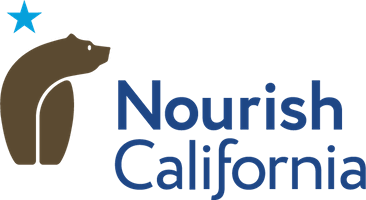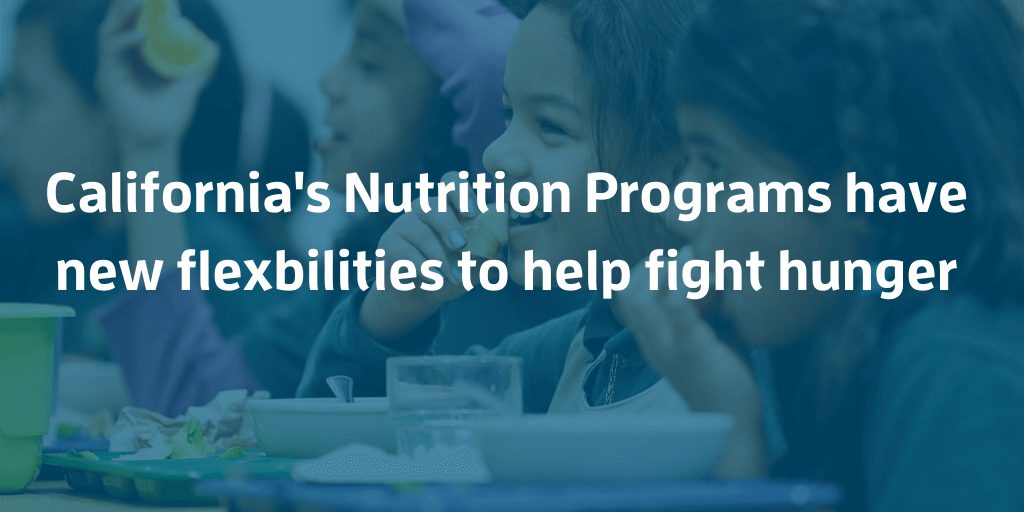UPDATED 01.12.21
As the public health emergency worsens, federal and state policymakers have taken a number of actions to strengthen the nutrition safety net and improve food access.
Below, you will find our latest updates on waivers released by the United States Department of Agriculture and state actions to improve food security during the COVID-19 crisis. Many of these actions were taken after affected individuals and families shared their stories of what is happening on the ground at schools, senior centers, child care centers, grocery stores, and private homes. CFPA and our anti-hunger allies want to thank everyone who shared their stories and helped communicate the urgent need for action to federal policymakers. Thank you for supporting our shared efforts to ensure vulnerable Californians are getting the food they need during this pandemic. Please scroll through to see updates and ways you can continue to advocate. For frequently updated information on California’s food security response visit CFPA’s COVID-19 webpage.
What new flexibilities are available within California’s Child Nutrition Programs?
USDA Food & Nutrition Service: “Current list of Child Nutrition Program waivers granted to California”
- Non-congregate meals are now available to child care, adult day care, and afterschool programs: Under the COVID-19 CACFP Waivers, Child and Adult Care Food Program operators can suspend normal meal-times; offer “grab and go” take home meals or delivered meals instead of on-site meal service; and drop the activity requirement for at-risk afterschool programs.
- Parents and guardians can pick up meals for their children: Under the COVID-19 Parent Meal Pick-up Waiver, schools, child care centers, family child care homes, adult day care programs, and other approved child nutrition operators can provide grab and go meals to parents and guardians to take home to children and adult participants.
- Grab and Go meals can be served at more convenient times: The Nationwide Meal Times Waiver enables child nutrition program operators to adjust the time of meal service for the National School Lunch Program, School Breakfast Program, Child and Adult Care Food Program, and Summer Food Service Program so that times are more convenient for families and caregivers.
- WIC remains open and can enroll participants and issue benefits remotely: USDA has approved a Physical Presence Waiver for California’s WIC programs which lifts the requirement that WIC participants and applicants physically come into the clinic to enroll or re-enroll. The waiver also defers certain requirements used to determine nutritional risk. The Remote Benefit Issuance Waiver also enables local WIC agencies to remotely issue WIC benefits on the California WIC Card. The waiver originally was granted through May 31, 2020, but USDA recently extended the waiver until the end of June.
- WIC has temporarily expanded the foods that families can buy with their WIC card: The USDA has updated WIC authorized foods during the COVID19 crisis. Please note that this is temporary and the new foods can ONLY be purchased when the original WIC food is unavailable.
- Child Nutrition Operators have more flexibility with meal pattern requirements: The Meal Pattern Requirements Waiver allows for meal pattern flexibility in child nutrition programs (CACFP, NSLP, SBP, SFSP, and SSO) so that program operators can continue to serve meals even if they are experiencing shortages in the availability of food and beverage items.
- Schools have longer to apply for the Community Eligibility Provision (CEP): USDA has extended CEP deadlines for School Year 2020-21. Schools have until August 31 to apply. Many more schools will likely become eligible to serve universally-free school meals under CEP as a result.
- Pandemic-EBT (P-EBT) will soon be available to free and reduced-price eligible students: California’s state agencies submitted the state plan to FNS to provide Pandemic EBT, a well-tested solution that delivers nutrition assistance on an EBT card that can be used to purchase groceries for families with K-12 children who qualify for free or reduced-price school meals when schools are closed for more than five days because of coronavirus. California’s plan was recently approved by USDA. P-EBT card issuance will begin May 8 to all automatically eligible families. If a family believes themselves to be eligible for P-EBT but has not received a P-EBT card by about May 25, they should apply online.
Read the All County Welfare Directors Letter implementing P-EBT.
Visit the the CDSS P-EBT webpage.
Read the the FNS FAQ about P-EBT.
- On March 30th, USDA announced that they are waiving certain onsite monitoring requirements for the school meals programs, the Child and Adult Care Food Program, and the Summer Food Service Program. To learn more about requirements specific to these waivers visit USDA’s webpage.
- Some meal claim deadlines have been extended: The 60 Day Reporting Waiver provides some administrative relief to child nutrition program operators by extending the deadline for submitting January and February 2020 meal claims.
What new flexibilities are available within the CalFresh Program?
USDA Food & Nutrition Service: “Current list of SNAP/CalFresh waivers granted to California”
- Do Stimulus Payments count as income for CalFresh? No. Individual rebates (stimulus payments) authorized under the CARES Act are excluded from consideration as income in the month of receipt.
- Read the All County Welfare Directors Letter guidance regarding the treatment of individual rebates received under the CARES Act for CalFresh.
- Some CalFresh participants can continue receiving SNAP benefits for longer: Governor Gavin Newsom issued an Executive Order on March 17 waiving all redetermination requirements for CalFresh benefits (and Medi-Cal and CalWORKS) for 90 days. On March 23, USDA approved the state’s request to waive periodic reports for CalFresh. Now, CalFresh clients who have recertifications or SAR-7s due before June do not need to complete them now and will not lose their benefits.
- Read the All County Welfare Directors Letter implementing the waiver of CalFresh reporting and recertification requirements.
- Some CalFresh participants will receive automatic increase in their monthly benefits: On March 30, USDA approved California’s waiver request to issue Emergency Allotments (EA) to current CalFresh participants. Such CalFresh households should have an increase in their April monthly benefits on April 12 to reflect the March emergency allotment, a subsequent increase on May 10 to reflect the April emergency allotment, a third increase available June 14 for May, a fourth in July for June, and a fifth on August 16 for July. CalFresh recipients will not need to take any action in order to receive their EA. This benefit will be automatically loaded to their EBT account.Read the All County Welfare Directors Letter implementing March and April CalFresh Emergency Allotments.Read the All County Welfare Directors Letter implementing July CalFresh Emergency Allotments.Read CA Anti-Hunger Partners’ FAQ about CalFresh Emergency Allotments.
- UPDATE 12.01.20: Per All County Welfare Directors Letter issued November 30, 2020, “Moving forward, emergency allotments will only be approved on a month-by-month basis. The option to issue emergency allotments on a month-by-month basis will remain until the Secretary for Health and Human Services rescinds the public health emergency declaration that was issued on January 27, 2020, under section 319 of the Public Health Service Act or the State-issued emergency or disaster declaration expires.
- View and share CA Anti-Hunger Partners’ client-facing flyer. English
- New CalFresh applicants do not need to be interviewed as part of the enrollment process, as long as their required information is verified by the County Welfare Department. On March 26, USDA issued a nationwide waiver of the intake interview for CalFresh applicants. The state and USDA are to be commended for seeking and approving this important waiver. It will greatly streamline access and reduce processing times for the surge of new CalFresh applicants who need food assistance due to sudden unemployment and the greater economic downturn.UPDATE 7.14.20: FNS has denied the state’s request to extend the intake and recertification interview waiver through July 31st. CDSS has informed advocates that interviews will be re-introduced “as soon as administratively feasible, and no later than August 1, 2020.” Read the All County Welfare Directors Letter notifying CWDs of the expiration of the initial and recertification interview waiver.
- UPDATE 7.23.20: On Tuesday, July 21, 2020, the CDSS and other states received new guidance from FNS stating that they are now offering states an extension of the waiver of the initial application and recertification interview for July and August. California has opted to implement this waiver extension which will be valid for the months of July and August. Under the new waiver extension, counties must waive the interview requirement at initial application and recertification (if certain criteria are met) through August 31, 2020. For detailed guidance on implementation of this waiver refer to the ACWDL issued on April 2, 2020.Official guidance regarding the waiver extension will be released via ACWDL shortly.
- FNS has informed states that requests for waiver extensions beyond August will be approved on an extremely limited basis. We will share more information as soon as we have it.
- County Welfare Departments can now certify new CalFresh applicants over the phone without the client needing to provide a signature. Instead, eligibility workers “can document in the case file that a client verbally attested to the information provided on the application. The worker must document the client’s name, date and time of application, a summary of the information to which the client verbally assents, and the client’s responses indicating agreement or disagreement. Such documentation will fulfill the requirements for a signed application for households who submit an application over the phone or who have submitted an application without a signature.” This is an especially important access improvement for applicants residing in counties that do not currently allow clients to provide a signature over the phone.
- Read the All County Welfare Directors Letter extending the changes to CalFresh telephonic signature and interview requirement through July.
- UPDATE 01.12.21: Telephonic signature waiver requests will now be approved on a month-by month basis through the end of the public health emergency. Read the most recent waiver extension ACL, through February 28, 2021, here.
- Childless adults (or, ABAWDs) who were subject to CalFresh time-limits will no longer be subject to time limits and related work provisions: USDA has temporarily suspended SNAP’s three-month time limit on benefits for adults under age 50 without children in their home, effective April 1.UPDATE 7.23.20: The CDSS CalFresh Branch request to the USDA Food and Nutrition Service (FNS) to waive the three-month CalFresh time limit for unemployed adults without minor children in ALL California counties for one year has been approved. The time limit will continue to be waived statewide until June 30, 2021.Read more here.
- California’s request to USDA for authority to implement online purchasing for EBT cards was approved April 8. CDSS is currently working with retailers to plan implementation, and anticipates that online purchasing through WalMart and Amazon will be available for CalFresh customers beginning April 28. The state and stakeholders are also working to expand the number and type of participating retailers.Read the All County Welfare Directors Letter informing counties of the expedited implementation of EBT online purchasing.
Act now to help bring additional relief:
The passage of H.R. 6201, the Families First Coronavirus Response Act, made a number of the above flexibilities possible and although the Coronavirus Aid, Relief and Economic Security Act, known as H.R. 748, included many additional investments that will help Californians weather this crisis, gaps to food and economic relief remain. To learn more about opportunities to engage in advocacy to bring forward much needed food relief please visit our federal, state legislative, state administrative, and policy research agendas or check out our COVID-19 webpage.
Questions?
Contact: Melissa Cannon at 209.200.8446 or visit www.cfpa.net/covid19 or www.cfpa.net/federal-advocacy





